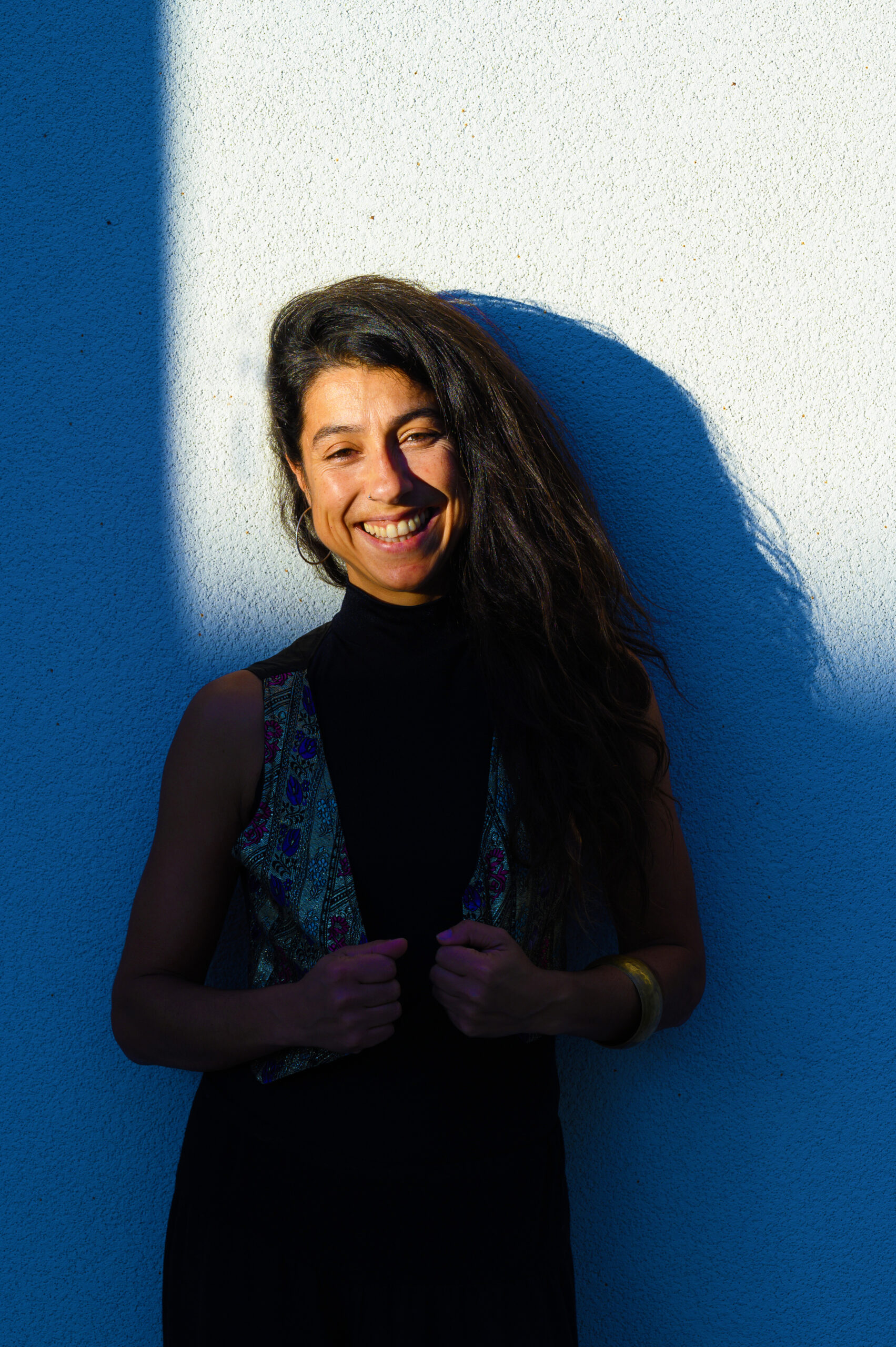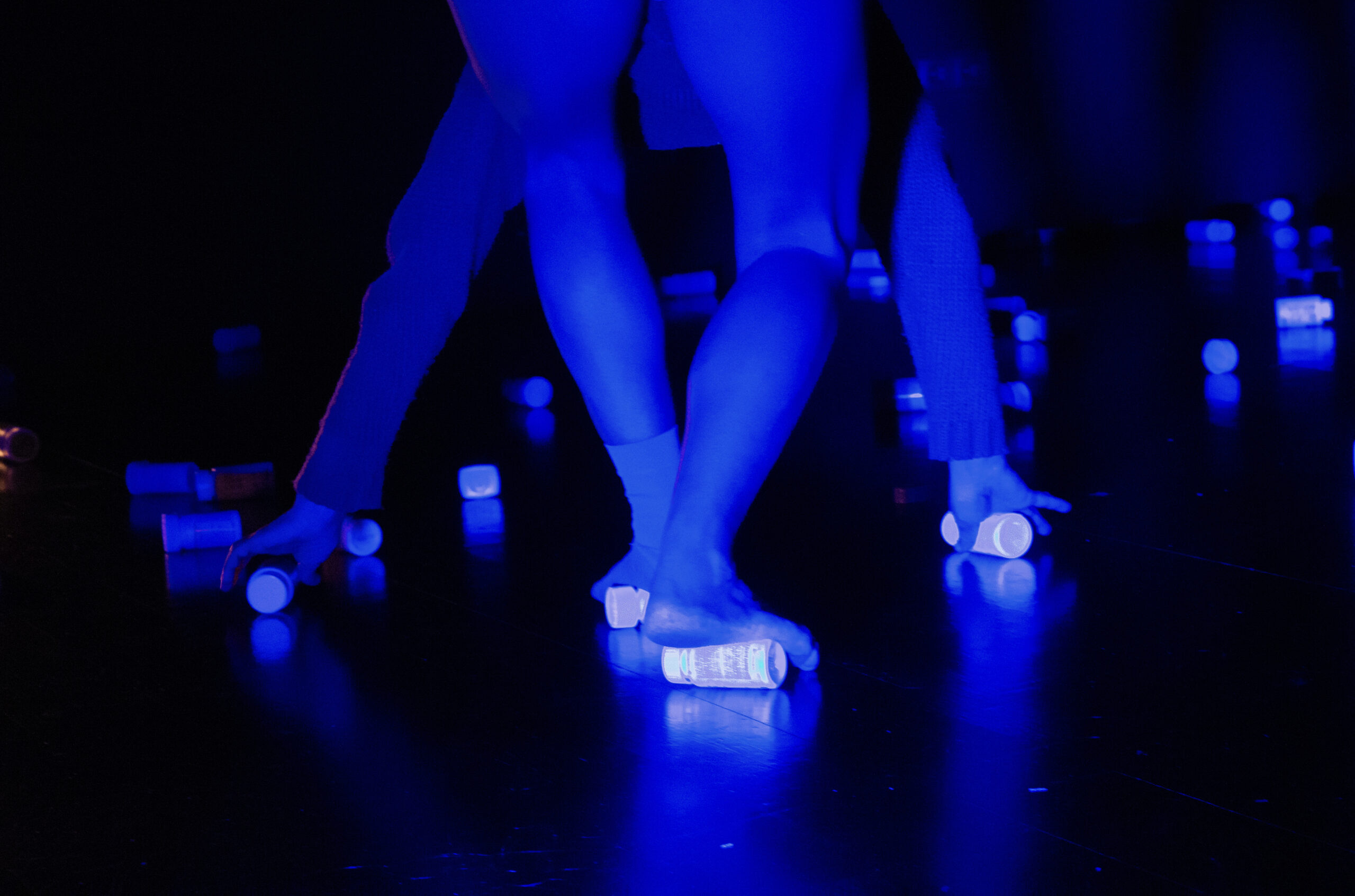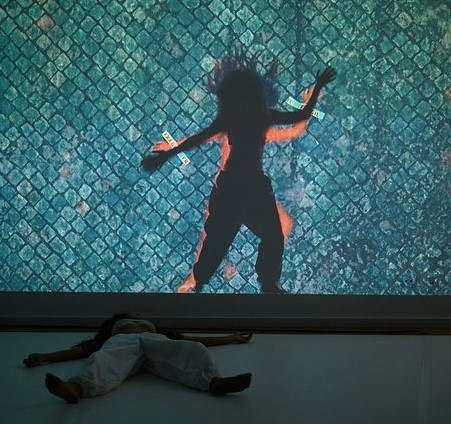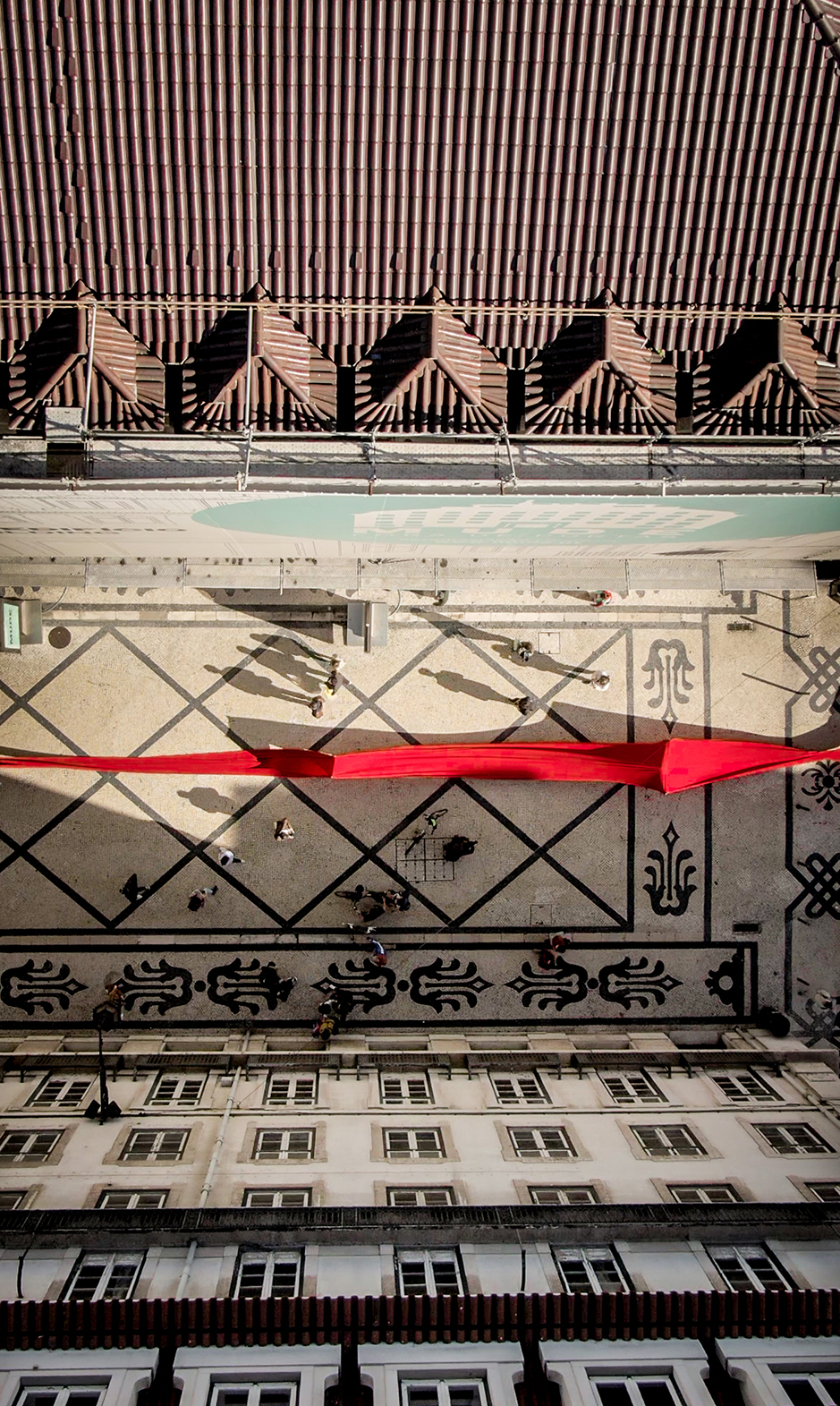
Teresa Fabiao © Jose Caldeira
Teresa Fabiao is a Portuguese dance artist and artivist. Her work is focused on art education and creative expression on the topic of living with HIV to raise public awareness.
1. Teresa, what are you working on now?
Right now I’m revisiting my performance UNA. It was my first “dive” into the adventure of talking artistically about HIV. UNA is a performative research on HIV, based on biographical, biomedical and sociopolitical issues. It is a ‘multivocal’ solo, expanded through interviews with other positive bodies collected in different countries around the globe. UNA premiered at the end of 2021, and recently won funding for an international tour.
I also have a community based project, IMUNE. IMUNE investigates virus as an engine of social transformation, having HIV as a starting point. Adopting an intersectional lens, the project puts HIV+ and HIV- people in dialogue, and the potential of an allyship between art, health, and education to destigmatize/deconstruct the oppressions experienced by marginalized bodies.
This research began when I won an Erasmus for Young Entrepreneurs and was working with an NGO in Northern Spain connected with HIV communities. I was manifesting that I wanted to work with diversity. When I arrived I discovered the group I was assigned was quite diverse! People with HIV, mental disorders, in drug rehabilitation, and political refugees from various parts of the world; Africa, South America, and Spain.
Being faced with this reality, I started by searching for common ground, and the challenge that brought each person to the group. Then, I focused on resourcing them using “Life/ Art Process,” a method I learned at the Tampala Institute in California, based on movement, drawing, writing, voice and somatic practices.

UNA dance performance
Teresa Fabiao © Luis Rosa Lopes
2. Why did you chose HIV as the topic?
On December 1st, 2020 through an artivist action I shared my status, a woman living with HIV, to the world. This was a turning point for me.
I always related to dance and dance research by asking myself how can I use dance to contribute to society? Dance for me is not just a physical, virtuosic, or performative practice. Dance, for me, is a practice of social transformation.
For a while I was in a vulnerable space. I lived for 8 years in Brazil, then returned to Portugal and didn’t have connections. I was afraid to re-enter my country with this label. I see HIV as a social disease that needs education. In the group I began this project with in Spain, only two were women. It is very difficult for women to come out and talk about this status.
I realized over time I want to be a part of the contra-hegemonic movements that are rising. People are finally asking how can I educate myself? Racism isn’t a thing of the past, nor a responsibility of “the other,” or the government. We all need education on this topic. For me HIV is something we haven’t been talking about openly and need to so people can learn.

UNA dance performance
Teresa Fabiao © José Caldeira
3. How did your creative process working with HIV unfold?
My journey started in my micro-cosmos, my relationships. It was a big shock when I received this diagnosis and realized I don’t know anything about HIV. I wasn’t educated about it in school. I didn’t have anyone near me that I could identify with. No reference point, for example, to have the empathic experience of how it is to be on the other side of hearing someone speak about having this disease. As I started sharing I realized there were many people in my social network who don’t have information either. There was still an atmosphere of silence and ignorance. This feeds the stigma and perpetuates the fear.
At the time of diagnosis I was in Brazil doing my PhD. When I finished I felt called to return to my roots and be with my peers, friends and family in Portugal. Today I feel more of an online presence of women sharing they have HIV, but the first 5 or 6 years of my diagnosis I had no identification, just a prejudice idea that this was the disease of gay men. I couldn’t mirror myself with anyone. Over time I began to connect through the internet and social media.
In 2015 I realized I had to integrate this with my art, but being an immigrant freelance artist, I still wasn’t able to assume this in my artistic research.
I came to understand HIV as a field of research in human experiences and interpersonal skills that are common to any one of us. For example, what is the main human experience I feel is related to this condition? If I think not about the disease itself, but about the human experience of oppression and rejection, then everyone has access because we’ve all experienced this. Then, how can I turn this into movement research?

VIRAL public action in Lisboa
Teresa Fabiao © Jomarques
What is the disease? dis – ease? The thing that creates imbalance inside oneself? For example rejection, oppression, stigma. What is the antidote? The serum to restore balance again? Acceptance, empathy, resilience, interconnection. l use the expressive arts; movement, writing, drawing, and voice as a way for people to explore these themes, encounter their challenges and transform them into a resource, because to connect with one’s creativity is to connect with one’s strength and agency.
This is one branch of the research. The other is for myself, choreographic working towards performance.
I first shared my solo as a work in progress in 2019. In the post performance talk people felt it was very charged. I didn’t have the courage to say out loud what it was about, though.
After I returned to Portugal with eight years of education, I thought doors would open for me. Nothing could have been further from the truth. The contemporary dance scene in Portugal is very closed.
The calling to use the arts to educate helped expand me as a human being. On World AIDS day of that same year (Dec 1st 2019) I took the courage and shared my status with the world in two ways. I co-founded VIRAL, the first artivist collective of HIV+ and HIV- bodies in Portugal. We look at how performative actions can be a way to empower and change the narrative around HIV AIDs. We did a performance in the streets of the main plaza in Lisbon. The second way I shared was on social media. Two months prior I’d participated in a photo project that was celebrating the beauty of HIV+ bodies. I used those photos and told my story. So that was how I came out of the closet.
 NOLAbeings
Multimedia artist Claire Bangser created NOLAbeings as a portrait-based story project that marries...
NOLAbeings
Multimedia artist Claire Bangser created NOLAbeings as a portrait-based story project that marries...
 Data corner: Adobe Suite (create a PDF, social media graphic, presentation, edit a photo and video
Data corner is where you go to work with analytics and top tech skills. It takes on everything from PERL and SQL to Canva and Sprout Social.
Data corner: Adobe Suite (create a PDF, social media graphic, presentation, edit a photo and video
Data corner is where you go to work with analytics and top tech skills. It takes on everything from PERL and SQL to Canva and Sprout Social.
